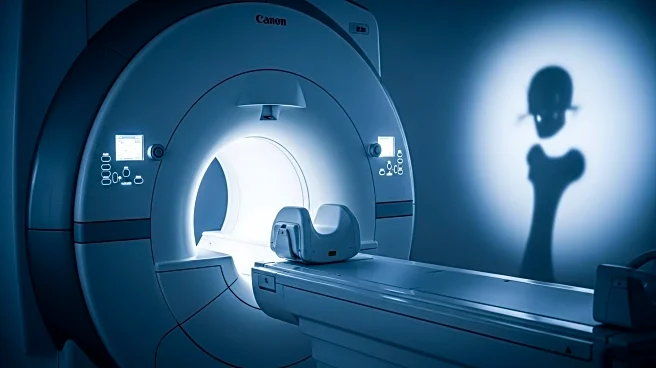What's Happening?
A multicenter study has developed a machine learning-based model to predict the one-year overall survival of patients with angioimmunoblastic T-cell lymphoma (AITL). The study involved 252 treatment-naïve AITL patients from four Chinese institutions, with 223 patients included in the final analysis. The CatBoost model, utilizing eight key variables, demonstrated superior predictive accuracy compared to other models, achieving an area under the curve (AUC) of 0.8738 for the training set and 0.8277 for the testing set. The model's performance was further refined using the Recursive Feature Elimination (RFE) method, identifying the most important predictors such as age, B symptoms, and ECOG performance status.
Why It's Important?
This development is significant as it offers a more accurate prognostic tool for AITL, a rare and aggressive form of lymphoma. By improving prediction accuracy, healthcare providers can better tailor treatment plans and potentially improve patient outcomes. The use of machine learning in medical prognostics represents a shift towards more personalized medicine, where treatment can be optimized based on individual patient data. This approach could lead to more efficient use of healthcare resources and improved survival rates for patients with complex conditions like AITL.
What's Next?
The study suggests further refinement and validation of the CatBoost model in diverse clinical settings to ensure its applicability across different patient populations. Future research may focus on integrating additional variables or exploring other machine learning techniques to enhance predictive accuracy. Stakeholders, including healthcare providers and researchers, may consider adopting this model in clinical practice to improve prognostic assessments and treatment strategies for AITL patients.
Beyond the Headlines
The integration of machine learning in healthcare raises ethical considerations regarding data privacy and the need for transparency in algorithmic decision-making. As predictive models become more prevalent, ensuring that they are used responsibly and equitably will be crucial. Additionally, the success of such models may encourage further investment in AI-driven healthcare solutions, potentially transforming the landscape of medical diagnostics and treatment.











